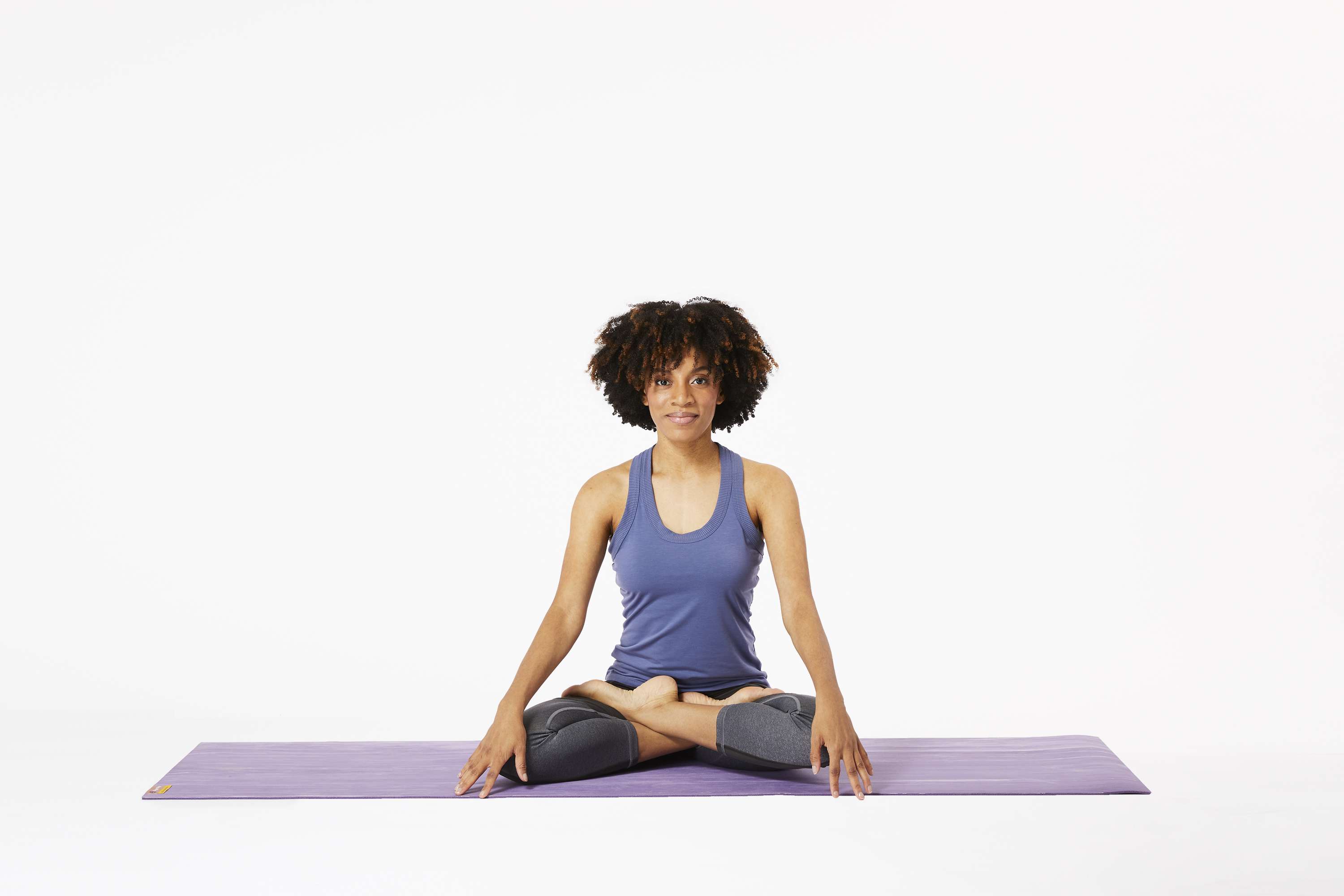
Many yoga poses can help with low back pain. Some of the poses are very easy while others can be more difficult. In this article, I'll go over a few of the most effective ones. A good starting point is Child's Pose. Lower your knees and bend your elbows at the mat. Then turn your feet slightly inwards and outwards. Then, press your hands together and stretch your arms out to the side. Keep your hips turned away from the floor and your head hanging freely.
Forward bend is the first pose to help low back pain. Forward bend will help you stretch your hamstring muscles as well as increase your range-of-motion. This exercise requires you to sit on the floor with your hands on the floor. To practice the pose, you can sit in a chair. While you twist your spine, you will also stretch the larger muscles of your back. This is a good yoga pose for low back pain.

The next yoga pose for low back pain involves a position known as the wall. This pose provides gentle traction on the spine while drawing attention to the midline of the body. This is especially useful for those with chronic low back discomfort as it can help them regain mobility in their hips and flexibility. This stretch can be further enhanced by pillows or blocks. Your head, neck, and spine should be aligned. Your arms should reach the wall.
Next, raise your left leg towards the side. Bend your elbows. Your right arm should be lifted towards your chest. Next, support your lower back using the left foot by lifting your right leg off the ground. Continue to breathe from your right thigh. Hold this pose for 20-30 second. You can repeat this exercise up to five times. This will strengthen your lower back.
Sphinx Pose can be a great yoga position for low back pain. This pose is great for hamstring and spine stretching and can create a soothing sensation. Sphinx is similar to Locust Pose. It has a longer spinal column which can be used to reduce stress and open the hips. Sphinx, in addition to its calming effects, is an excellent yoga pose for low back pain.

One of the most effective yoga poses to relieve low back pain is the "child's pose". It is a great way to relax and prepare your lower back for rest. The right foot should be pointed forward, and the right hand should rest on the hip. During the upward dog pose, your tailbone will stretch downward and release the tension. The downward dog pose can be used to help calm your mind after you've completed an upward dog.
FAQ
How Metabolic Health is Key to Aging Well
Today's people live longer than ever before. As they live longer, they also get sicker. Even though we have made significant advances in medical science it is becoming clearer that our current approach doesn't work.
We must change the way that we look at health and aging. Healthy aging is possible only if we look at our metabolic health, not just weight loss, but also overall well-being.
If you want to live a healthy, active lifestyle for the rest of your life, it is important to maintain a strong metabolism throughout your entire life.
There are many options to improve your metabolic health. One of those ways is to incorporate these 7 foods into your diet:
-
Resveratrol in blueberries has been shown to support cell longevity. They are also rich in vitamins C & E and antioxidants.
-
Pinto beans and lentils are great sources of fiber and plant-based proteins. These nutrients are important for maintaining blood sugar levels that don't spike, crash or change.
-
Broccoli's sulforaphane has been shown to protect DNA from damage in research. It could even slow down the growth of cancer.
-
Chia Seeds contain high levels of fiber and omega-3 fat acids. They are also rich in antioxidants, protein, and fiber. All of these nutrients are good for heart health, brain function, gut health, and overall health.
-
Green tea contains catechins, which are polyphenols. Green tea catechins have been shown to reduce bone fractures, heart disease, cognitive decline, diabetes risk, and other health issues.
-
Salmonis one of the best sources of lean protein, low in saturated fat, and packed with vitamin D.
-
Walnuts are rich in omega-3s as well as antioxidants such alpha lipoic acids (ALA). ALA helps boost energy production and protects against inflammation.
Is it true that kidney stones can be caused by overeating protein?
Protein is essential for healthy bones and tissue. But consuming too much protein can lead to calcium excretion through urine. In turn, this can result in kidney stones.
It is important to keep in mind that not everyone will develop kidney stones if they consume more protein than 2 grams per kilogram (2.2lbs). People can eat large amounts of protein and not get kidney stones.
Your sodium intake can prevent kidney stone formation. Sodium helps regulate water balance in the kidneys. Too much sodium results in a higher risk of developing kidney stones.
You can also reduce your intake of proteins if you develop kidney stones. For most people, protein provides half their daily caloric requirements. If you cut back on protein, you'll likely lose weight.
If you do decide to eat more protein, don't go overboard. Do not eat more than 20% of your daily calories from protein.
Which exercise is best for men
It all depends on your goals. If you want to lose weight, cardio workouts are great because they burn calories faster than strength training exercises.
However, strength training can be beneficial if you only want to build muscle mass. It increases lean mass.
Both types of exercise have proven benefits if you want to improve your overall health.
If you're looking for a quick way to get fit, I recommend HIIT/sprint interval training. This type helps you burn fat quickly, by increasing your metabolism. It also boosts your endurance to continue training even when you feel tired.
Statistics
- 10 pounds in a month is likely during a lean bulking phase, especially for beginners. (muscleandstrength.com)
- By John Thompson Take a whopping 38% off a set of PowerBlock Pros. (menshealth.com)
- The PRS enabled risk stratification for overall prostate cancer and lethal disease with a four-fold difference between men in the highest and lowest quartiles (HR, 4.32; 95% confidence interval [CI], 3.16-5.89). (pubmed.ncbi.nlm.nih.gov)
- Get free shipping and 25% off today. (healthline.com)
- According to the American Heart Association, blood pressure should be checked at least once every two years, beginning at age 20. (my.clevelandclinic.org)
External Links
How To
What nutrients do men need each day?
For healthy growth and development, men need to eat a balanced diet. The body requires vitamins, minerals, proteins, carbohydrates, fats, water, fiber, and other essential elements.
You also need specific nutrients for different times in the day. Your body makes hormones, antibodies and enzymes when you are asleep. When you awake, protein is used by your body to build muscles or repair damaged tissue.
Your body stores extra energy as glycogen and breaks down fat at night. During this time, your body needs fewer calories but still needs sufficient nutrients. You might have an occasional snack during the night if your stomach is feeling hungry.
For your body to function properly, it needs adequate amounts of protein and carbs. If you train hard, you may experience muscle soreness after exercising.
To prevent this from happening, you need to consume carbs or protein within two hours. Your body will breakdown stored glycogen and provide you with glucose for energy.
Additionally, it is important to eat protein right away after your workouts are over. This prevents muscle tissue from being broken down while you are sleeping.
Your body can produce lactic acid during intense physical activity. It builds up in your bloodstream, which can lead to fatigue. Eat foods high in carbohydrate, such as fruits, vegetables, to avoid this.
Carbohydrates give your body the energy it needs to recover from strenuous exercise.
A healthy diet should include lean meats such as fish, eggs and milk, cheese, yogurts, beans, seeds, nuts, and beans.
All of these foods contain high quality protein. Protein promotes muscle growth, and helps repair damaged tissues. Protein also supplies the amino acids your body requires to make sex hormones, such as testosterone.
Good skin, hair, and joint health requires adequate dietary fats. Healthy men need between 20% and 35% of their total caloric intake from fat.
Fat helps keep your heart strong and protects against cancer. Your brain also functions properly thanks to fat.
You can get the majority of the fats that you need from vegetable oils such as soybean oil.
These oils are high-in monounsaturated, unsaturated fatty acid (MUFAs). MUFAs are good for lowering cholesterol and reducing inflammation. They protect your cells and prevent damage from free radicals.
Saturated fats (SFAs) are found mostly in animal products like meat, dairy products, and butter. SFAs increase LDL ("bad") cholesterol, and increase triglycerides. They also promote weight gain and belly fat.
Plant-based fats such as vegetable oils, seeds, nuts and grains contain polyunsaturated (PUFAs). PUFAs help improve cardiovascular function, and lower inflammation. They also help control blood sugar and cholesterol.
Erectile dysfunction can often be a problem for men who have low HDL ("good") levels of cholesterol. A high intake of saturated fats leads to higher levels of bad cholesterol.
Men who eat a lot of red meat or pork develop prostate problems because they contain large amounts of nitrates. High temperatures can cause nitrates to become nitrosamines. These compounds can cause lung cancer.
Most processed meats contain nitrites or other harmful chemicals. They should be avoided.
The American Heart Association suggests that no more than two servings per week of red meat should be consumed. Instead, choose poultry, fish, legumes, tofu, whole grain bread, and cereals.